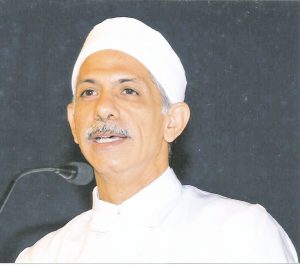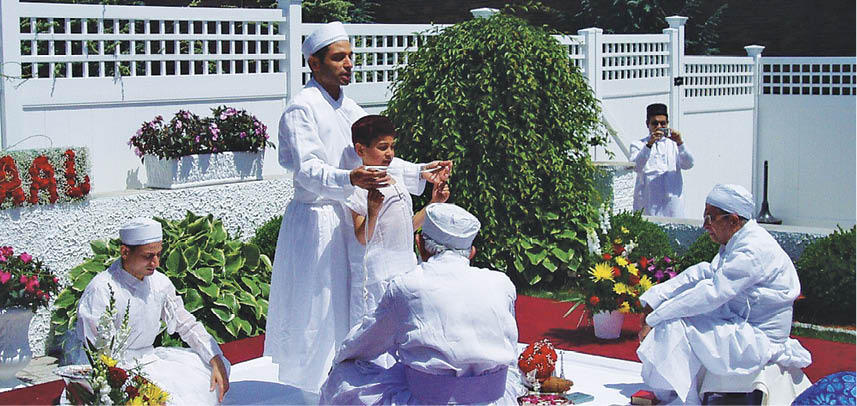 PT: How did we start the practice of wearing the Sudreh and Kusti? What is the relevant vow made during our Navjote ceremony?
PT: How did we start the practice of wearing the Sudreh and Kusti? What is the relevant vow made during our Navjote ceremony?
Er. Ramiyar: Wearing the Sudreh and Kusti is an ancient practice introduced by King Jamshed, even before the times of prophet Zarathushtra. Navjote is the ritual in which a Zoroastrian child is first made to wear the Sudreh and the Kusti. The word Navjote is derived from the words Nav and Zot, which mean ‘a new offerer of prayers.’ The main purpose of Navjote is to ceremoniously invest a child with Sudreh, ‘the sacred shirt’ and Kusti, ‘the sacred girdle’, post which, the child must wear these lifelong, offering prayers to Ahura Mazda, and regularly performing the Kusti. At the time of Navjote, while reciting the Din no Kalmo prayer along with the priest, the child gives the promise, ‘Ahura Mazda is my only God, Zarathushtra is my only prophet, Mazdayasni Zarthoshti is my only religion, I will be faithful to my god, prophet and religion all my life.’ The Kusti ritual is the essence of our religion and gives divine guidance and energy to lead a good life.
PT: Which prayers must be recited while performing the Kusti? What other prayers are necessary?
Er. Ramiyar: The Kem Na Mazda; Ahura Mazda Khodai; Jas ame Avanghe Mazda; Ashem Vohu and Yatha Ahu Vairyo constitute the Kusti prayers. The Shahenshahi Kusti prayers end with Jasa me Avanghe Mazda. The Sarosh Baj does not form a part of the Shahenshahi Kusti prayers, but part of the Kadimi Kusti prayers. Some people recite the Sarosh Baj after the Shahenshahi Kusti prayers – it is beneficial, though not compulsory.
PT: What guideline should one adhere to while performing the Kusti?
Er. Ramiyar: The following guidelines should be observed:
- Cover the head and feet before performing the Kusti. One may stand barefoot on a thick cloth or mat, but never on the floor.
- Perform the Pādyāb, that is, thrice washing the open parts of the body (face, hands from wrist down, and feet – sole and upper part) with water after saying – Khshnaothra Ahurahe Mazdao and one Ashem Vohu. Then the hands and face have to be wiped, and the Kusti is performed.
- After doing the Pādyāb, one should not talk, eat, drink or remove cap/scarf till the Kusti is completed.
- One should not remove the Sudreh-Kusti, head covering and footwear in order to maintain the power (amal) of the Kusti ritual.
- Face the direction of the sun while doing the Kusti – towards the East in Havan gāh, South or West in Rapithwan gāh and West in Uziran gāh. After sunset, that is, in Aiwisruthrem and Ushahen gāhs, one can pray facing any source of natural light like the moon, stars, fire or oil lamp or facing an electric light. Never face in the Northern direction for any gāhs while doing Kusti.
- The Kem nā Mazdā prayer must be entirely recited whilst the Kusti is still on the waist. Only after finishing the Ashem Vohu, can one remove the Kusti from the waist.
- While performing the Kusti, one should take care not to let the Kusti touch the ground. It makes the Kusti prayers less effective.
- The Kusti prayers should be recited with proper pronunciations in an audible voice.
- During circumstances where we are without the Kusti for a while, for example when we bathe, we should recite the entire ‘Kem na Mazda’ before removing the Kusti, as ‘Kem na Mazda’ protects us while the Sudreh and Kusti are not on our body.
PT: Explain the significance of different ritual gestures, like shaking the Kusti, making loops etc.?
Er. Ramiyar: After doing the Pādyāb, one stands reciting the Kem nā Mazdā. The Kusti is to be untied after finishing the Ashem vohu following the Kem nā Mazdā. While reciting Ahura Mazda Khodāi, the Kusti is to be held in hands, the centre of the Kusti in the left hand, and the two ends in the right hand. While reciting Ahura Mazda Khodāi, the following gestures are done:
- Bow down at the words Ahuramazda Khodāi – once at the beginning and once in the middle of the prayer – to show respect and gratitude to Ahura Mazda.
- Strike the Kusti at the words: ahereman awādashān, dur avāz dāshtār, zad shekasteh bād, ahreman devān drujān, az hamā gunā patet pashemānum – to cleanse the Kusti and the self of the accumulated negative energies.
- Click the fingers of the right hand thrice at the words dushmata duzukhta duzvarshta – to strike out evil.
- Form two loops at the words Manashni and Gavashni – to have balance in thoughts and words.
- Touch the loops to the forehead at the word Kunashni – to indicate that actions should be in accordance with thoughts and words.
- Bow down at the words Khshnaothra Ahurahe Mazdao – to show respect to Ahura Mazda.
- Release the Kusti away from the body at the words taroidite anghrahe mainyeush – to show dislike towards Angra Mainyu, the evil spirit.
- Tie the Kusti on the waist at the words Haithyā varshtām – a resolve to be a truthful person.
- Tie a reef knot in front, on the word shyaothananām – to show commitment to Ahura Mazda and prophet Zarathushtra.
- Tie a reef knot at the back while reciting the Ashem Vohu – to show commitment to the religion and one’s religious duties.
- While reciting Jasa me Avanghe Mazda, hold the Kusti at the front knots to empower the Kusti with the energy drawn by prayers.
- While saying Jasa me Avanghe Mazda thrice, bow down thrice showing submission and humility to Ahura Mazda.
PT: What is the significance of praying Yatha Ahu Vairyo twice and Ashem Vohu once while doing Kusti?
Er. Ramiyar: Two Yatha Ahu Vairyo and One Ashem Vohu is a religious formula often used in our prayers. Two Yathas draw spiritual energy – that’s why we say two Yatha Ahu Vairyo even before reciting the Tandarosti. One Ashem Vohu signifies finishing a work, signaling here the completion of drawing the energy.
PT: When should one perform the Kusti?
Er. Ramiyar: The Kusti ritual should be performed before going to bed, after waking up, before entering the fire-temple, before meals, before doing any other Manthravani prayers, after the change of Gahs, after returning home from outside or from the toilet. It should also be done before and after attending a funeral.
PT: Why is it necessary to do the Kusti regularly?
Er. Ramiyar: Kusti is performed for two main reasons – firstly to cleanse our unseen body (like before entering a fire temple or coming home from outside) and secondly, to periodically receive and recharge our inner divine energy, just as we recharge a battery. Doing the Kusti helps maintain peace and good health, avert stress, overcome minor illnesses and stay constantly connected with Ahura Mazda.
By correctly reciting our Kusti prayers and observing the proper rituals while performing the Kusti, we get empowered with strength and wisdom to be good Zarthoshtis!
- Numero Tarot By Dr. Jasvi - 3 June2023
- Renovated M J Wadia Agiary Celebrates 12th Salgreh - 2 March2019
- Consecration Of Our Sacred Fires - 26 January2019
